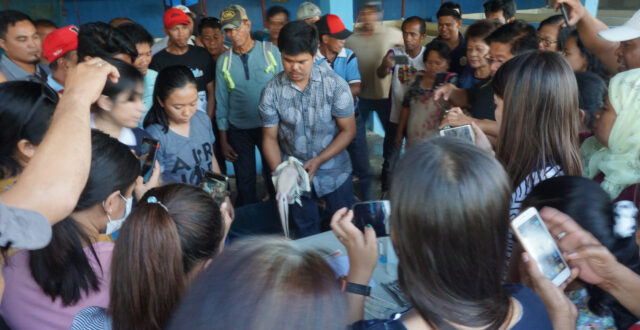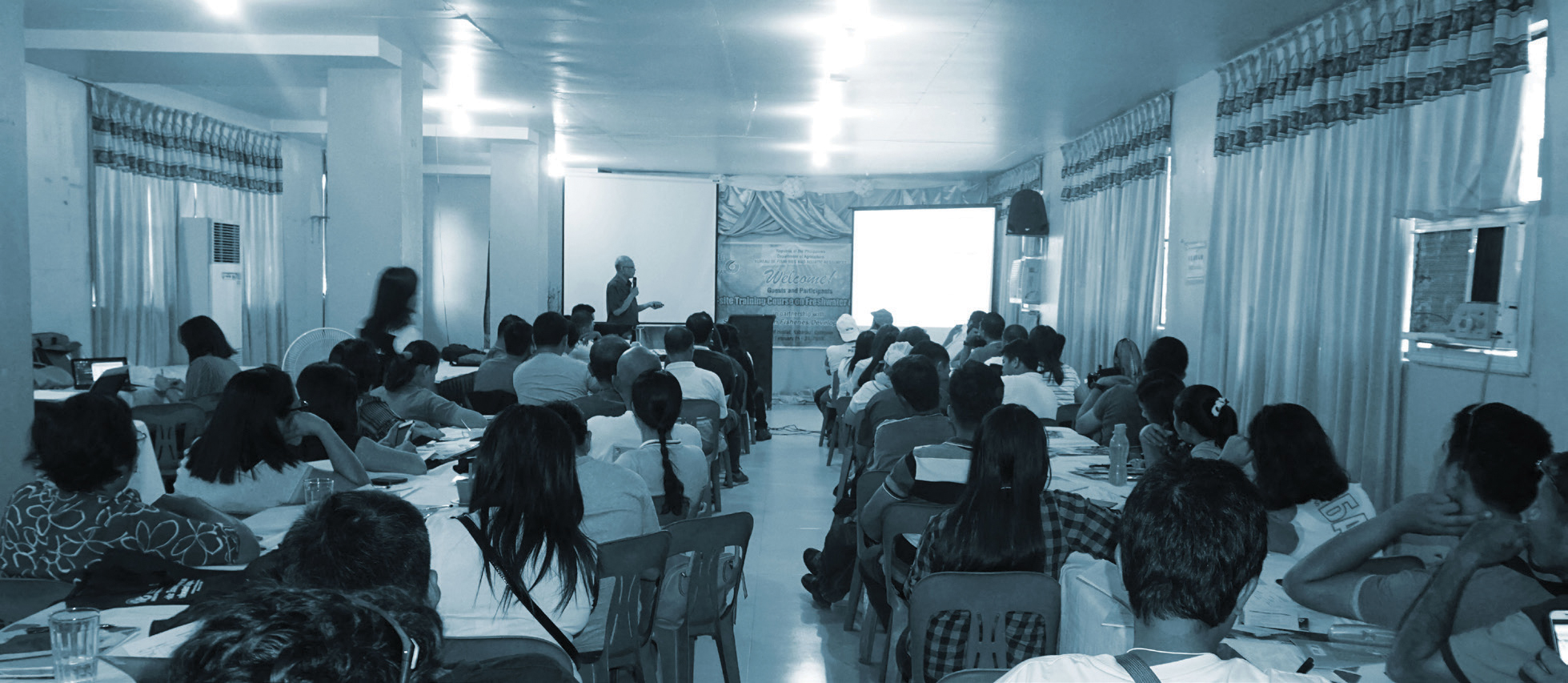
THE PROBLEM
There is a weak linkage between the scientific development of aquaculture technologies and the fish farmers
Decades of research has been invested in the development of new or improved aquaculture technologies and numerous publications have been written. However, the gap remains between these scientific endeavors and the uplifting of the aquaculture industry, especially in the part of marginalized fish farmers.
Scientific findings at SEAFDEC/AQD have always undergone verification trials in the field and technologies always packaged to be farmer-friendly. Further, information materials and training courses have been made available to stakeholders. However, a more intentional approach is needed to capacitate the grassroots and bridge gaps due to geographic distance, financial incapacity to avail of trainings, or level of education.
It is hoped that a more determined push to accelerate techno-transfer will improve livelihoods and contribute to uplifting local economies.
SOLUTIONS
Accelerate techno-transfer of mature aquaculture technologies through techno-caravans and field demonstrations.
SOCIO-ECONOMIC VALUE
- 209,058 fisherfolk are engaged in aquaculture activities in 20181
- Higher level of education among aquafarmers has been linked to higher farming efficiency2
1BFAR Online Information System 2018
2Dey, MM, FJ Paraguas, GS Bimbao, PB Regaspi. 2000.Technical efficiency of tilapia grow out pond operations in the Philippines. Aquaculture Economics and Management 4(1/2): 33-47
What has SEAFDEC/AQD been doing? (2019-2020)
Joint Mission for Accelerated Nationwide Technology Transfer Program-II
In collaboration with the Bureau of Fisheries and Aquatic Resources (BFAR), techno-caravans, field demonstrations, and hands-on training courses were conducted in different areas in the Philippines.
Field evaluation of BFAR’s national aquaculture centers and regional stations were done to identify appropriate technologies for demonstration. This technology transfer will provide fish farmers, entrepreneurs, and other end-users access to additional and alternative livelihood.
This JMANTTP-II program was designed to intensify the techno-transfer of mature aquaculture technologies to stakeholders towards accelerated fish production and export revenues from the aquaculture sector. It is hoped that these will provide additional and alternative livelihood to fisherfolks through aquaculture technologies that are sustainable, economically viable, environment-friendly, and socially equitable.
On-site trainings conducted in collaboration with DA-BFAR
| Course, date, venue | Commodity focus | Total participants | Participant profile |
| Freshwater aquaculture training course 25-28 February 2019 University of Southern Mindanao Kabacan, Cotabato Province |
tilapia, milkfish, giant freshwater prawn, catfish |
68 | Fishpond owners, farmers, and operators from Region 12 |
| Marine aquaculture of high-value species training course 20-22 May 2019 Tacloban City, Leyte Province |
groupers, sea bass, pompano |
64 | Training officers and fish growers from Region 8 |
| Milkfish training course 15-18 October 2019 National Mariculture Center, Panabo City, Davao del Norte Province |
milkfish | 40 | Milkfish farm operators, technicians, LGU staff, BFAR staff |
| On-site training course on freshwater aquaculture 1-3 July 2020 Zarraga, Iloio |
giant freshwater prawn, catfish, tilapia | 50 | Fish farmers, LGU staff, BFAR staff |

 SEAFDEC/AQD Southeast Asian Fisheries Development Center | Aquaculture Department
SEAFDEC/AQD Southeast Asian Fisheries Development Center | Aquaculture Department